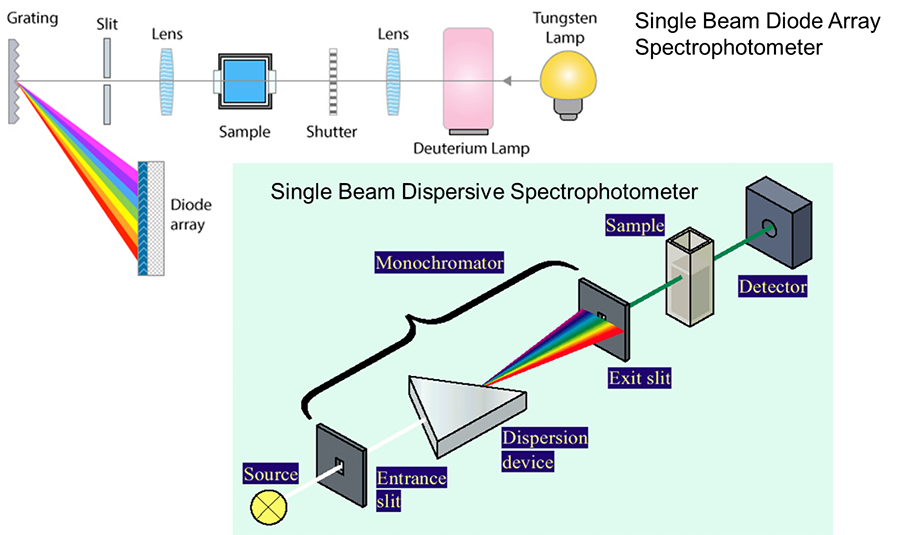What is a diode array spectrophotometer?

A diode array spectrophotometer is a different type of single beam optical design when compared to a dispersive design (above) Diode array instruments are optimized for rapid, simultaneous acquisition of a full UV/Vis spectrum. The design is somewhat like a dispersive single beam instrument, except the diffraction grating is after the sample to directly disperse the transmitted light from the sample onto a diode array detector. Unlike its dispersive slower scanning cousin, the grating in a diode array instrument does not move or scan. The transmitted light from the sample illuminates the array detector continuously, thereby allowing fast spectral data collection. An additional novelty is the use of both source lamps simultaneously to illuminate the sample with all light wavelengths from 190 nm to 1100 nm. A photo diode array detector (PDA) is a linear array of discrete photo diodes on a single integrated circuit (IC) chip. For spectrophotometers, it is placed at the image plane from the grating to allow a range of wavelengths to be detected simultaneously. In this regard it can be thought of as an electronic version of photographic digital camera detector array. The diode array detector is the secret to fast spectra collection. A diode array instrument can collect a full range UV/Vis spectrum in milliseconds to seconds depending on design. Although a single beam type instrument, subject to long term drift, this fact is rarely an issue since background corrections and sample data can be acquired in under a second.
Diode array instruments are ideal for collecting complete spectral data on rapidly changing samples in disciplines such as kinetics, dissolution, liquid chromatography, and multicomponent analysis.


